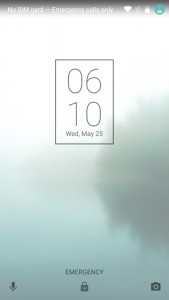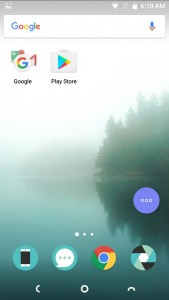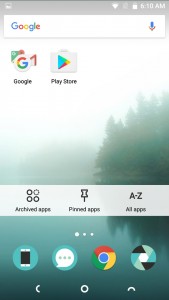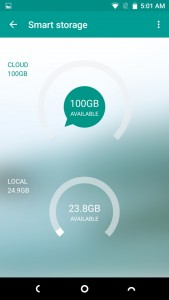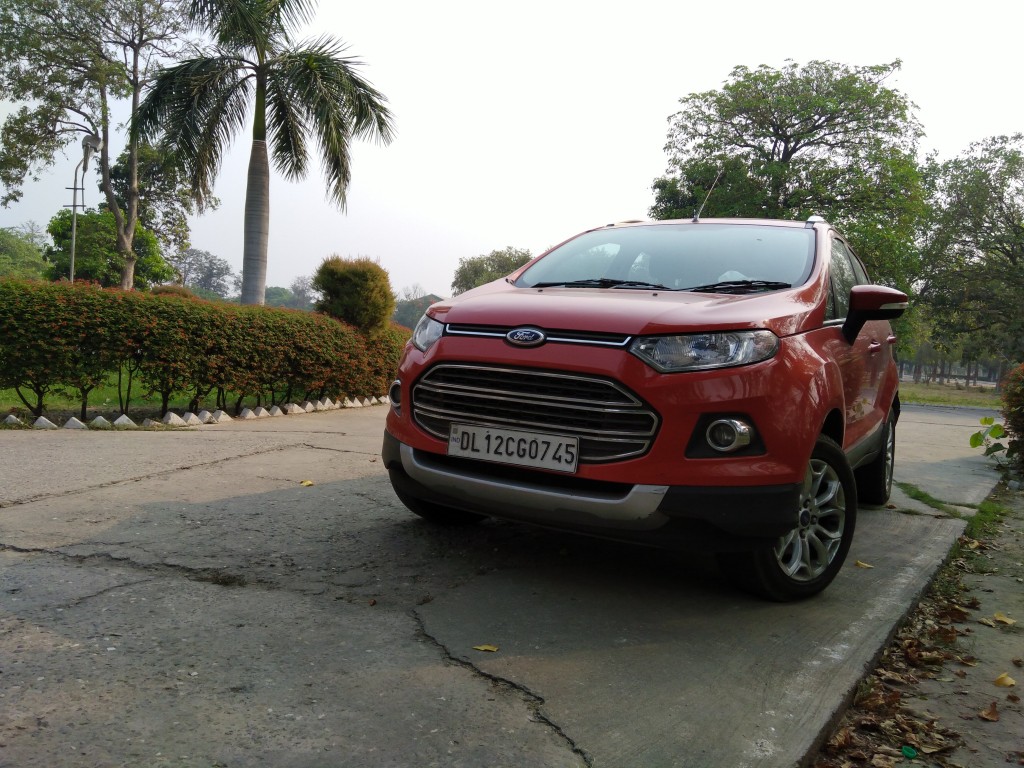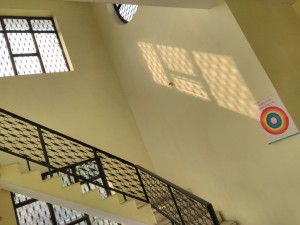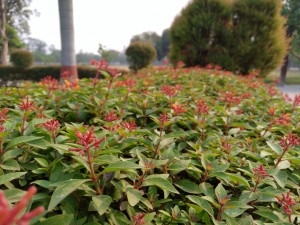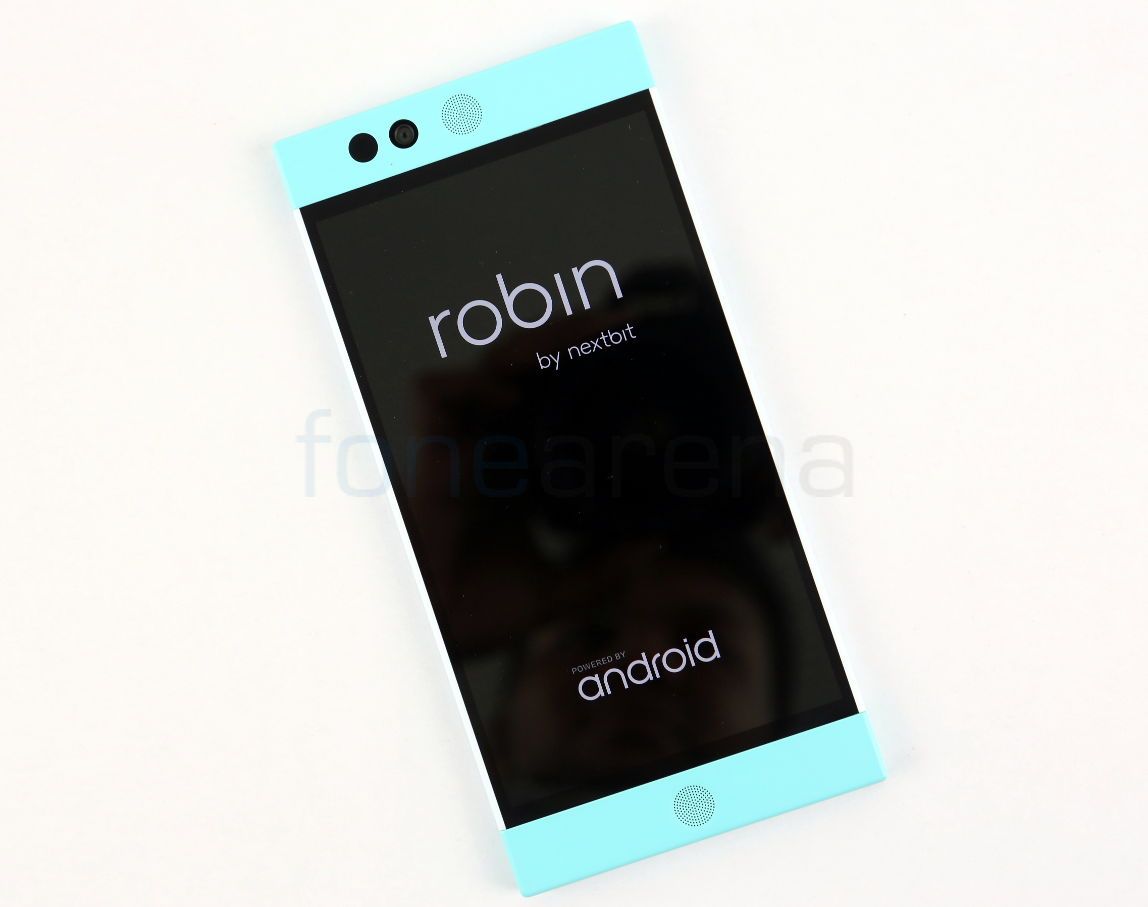
Chances are that you’ve already heard about the Nextbit Robin. A phone that solves a singular problem, the problem of running out of storage, most often when you need it the most. In doing so though, Nextbit has succeeded in making a rather good smartphone too. Here’s the FoneArena review of the Nextbit Robin where we talk about what really makes the handset tick.
Unboxing
httpv://www.youtube.com/watch?v=eS8XDK2v3h4
Nextbit Robin specifications
- 5.2-inch (1920×1080 pixels) IPS display with Corning Gorilla Glass 4 protection
- Hexa-Core Qualcomm Snapdragon 808 processor with Adreno 418 GPU
- 3GB RAM, 32GB storage/100GB online
- Android 6.0 (Marshmallow)
- 13MP rear camera with PDAF, dual-tone flash
- 5MP front facing camera
- Fingerprint sensor
- Dimensions: 149mm x 72mm x 7mm
- 4G LTE, WiFi 802.11a/b/n/ac, Bluetooth 4.0 LE, NFC, USB Type-C Port
- 2,680 mAh battery with Qualcomm Quick Charge 2.0
Design
It isn’t often that we come across a smartphone that embodies its software promise in the form of hardware design as well as the Nextbit Robin. An exceedingly pretty smartphone, Scott Croyle’s cumulus inspired design makes the handset bright, colorful while keeping the straight lines and symmetric geometry on point.
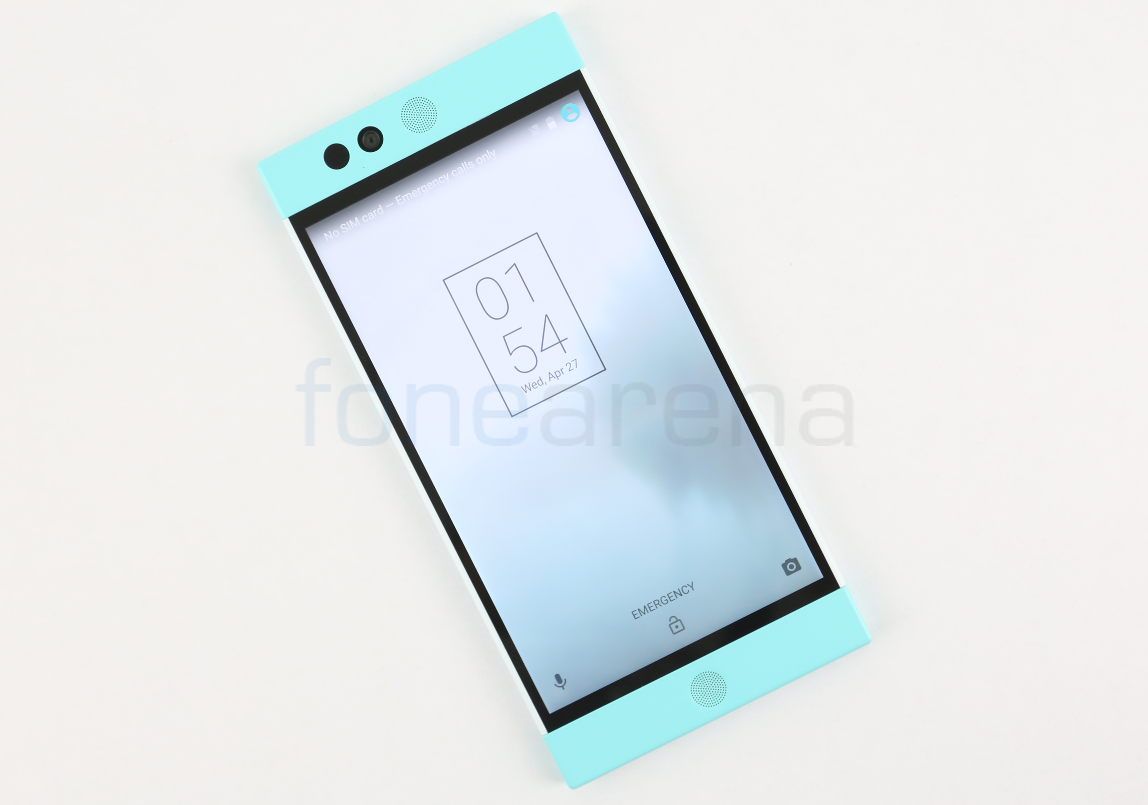
The Nextbit Robin sports a 5.2 inch display with a black margin running around it on all sides giving it the illusion of being a larger screen than it actually is. The display and bezel sit inside the larger frame of the phone that ships in an absolutely delicious mint color which is utterly unique and makes the phone stand out like none other. Up top is the front facing camera and the proximity sensor that are set in perfect symmetry in terms of size and shape. You might mistake the circular space below the display for a home button or a fingerprint scanner but it is yet another front facing speaker pairing up with the one above the display to offer stereo playback. The speakers go pretty loud but have a tendency to crackle at the highest levels.
The right side of the phone has the power button which includes an embedded fingerprint scanner. Despite the slim profile of the button, we found that the phone would easily read the fingerprint and drop us into the homescreen in a jiffy. That said, the flat button has almost zero travel which makes it a less than comfortable experience. Below the power button lies the single SIM tray. On the left hand side you’ll notice dome-shaped volume buttons that press down with a very satisfactory click. Here too, the travel could have been a bit more but we’d be nitpicking if we thought this to be a major issue.
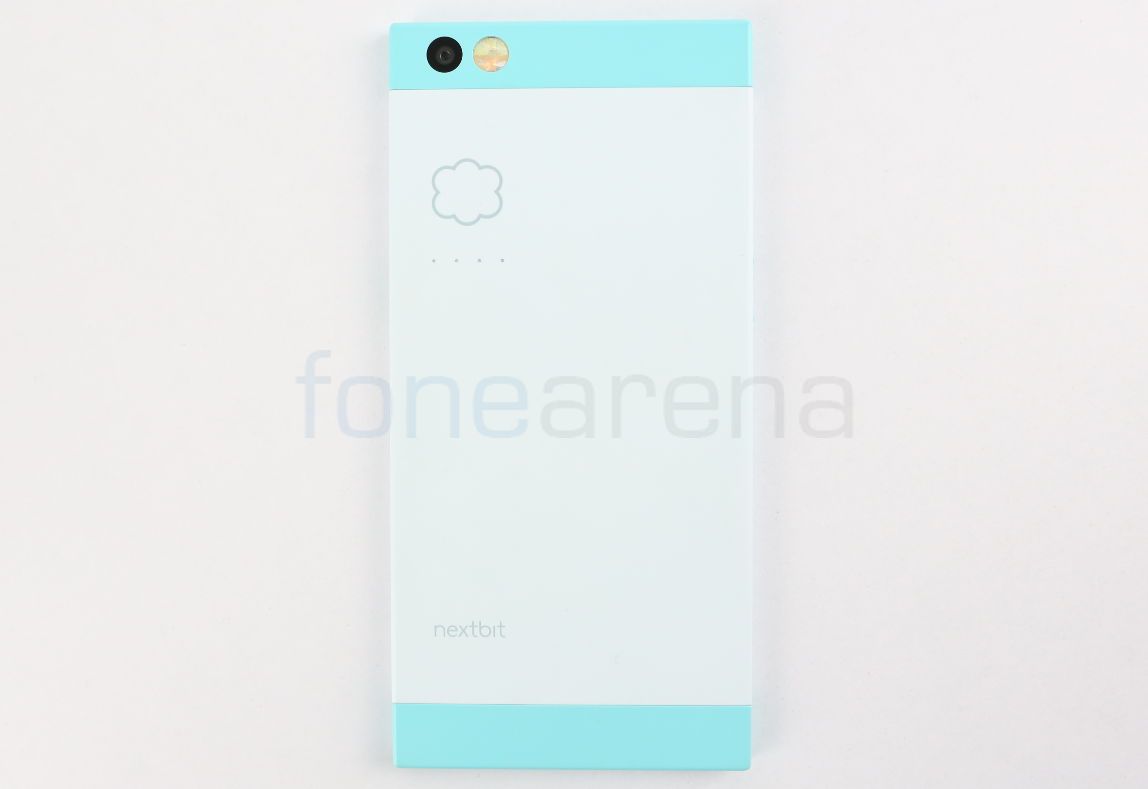
Flip the phone over and you get to see the continuation of Croyle’s imagination. Nextbit has taken a no-holds barred approach to design that clearly shows here. Bang in the center below the cloud logo lie 4 tiny LEDs that flash a pattern but only when the phone is backing up data to the cloud. It might seem like an indulgence but small flourishes like these are the ones that set handsets apart from the competition. A darker band runs around the top and bottom of the phone working as endcaps. Here you’ll find the 13MP camera alongside the dual LED flash. One again in perfect symmetric union.
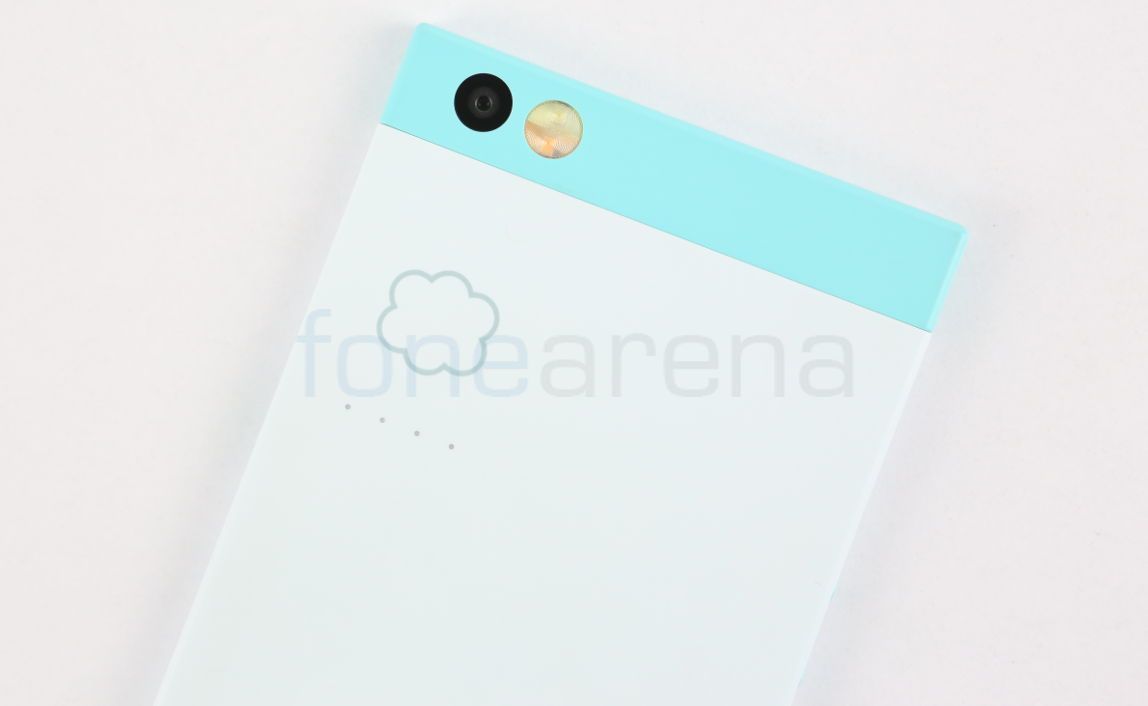
From the proximity sensors to the rear camera and all the lines between it. Nextbit’s focus on design with the Robin really stands out. Scott Croyle has a legacy of designing some of the most iconic HTC phones and his expertise shines on the Nextbit Robin too. The phone is striking to look at while maintaining the all important ergonomics as well. With dimensions of 149mm x 72mm x 7mm, the Robin might seem to be on the larger side but it fits well in the hand and the light weight helps in this regard.
Software
The Nextbit Robin ships with Android 6.0 Marshmallow on board. While there’s precious little bloatware on top, the company has made some subtle but important modifications to the way stock Android works.
As is fast becoming the norm, there is no separate app drawer on the device. All installed apps get dropped onto the homescreen itself where you can scroll through pages and access them as you’d want. Widgets aren’t supported on the homescreen but a simple pinch action brings you to a translucent layer that seemingly represents clouds. You can place all your widgets on this layer. While it is an added step, in hindsight it feels an interesting way to access widgets since it allows you to view them all in a single space irrespective of which page you might be on.
The bigger story here is of course the Nextbit Cloud. The phone ships with 100GB of cloud storage which isn’t very uncommon since many other flagships too often include large amounts of Google Drive storage gratis. The difference lies in how this free storage integrates deeply with the operating system and augments your usage experience. The Robin continuously monitors your usage patterns and quietly offloads applications that you haven’t used in a while. Same goes for photos. While that might sound relatively trivial, there’s two aspects of the backup process that bear mentioning. The first and perhaps most important is that the phone maintains all app data on local storage thereby allowing you to continue using the app from the exact position you were before backing it up.
Confused? Let us explain. Perhaps you are using a music streaming service on your phone. I’m a fan of Spotify so let’s take that as an example. If you haven’t used it in a while, the Robin will beam this up to the Amazon powered cloud to free up local storage. A greyed out icon will continue to show up on the display. Now a couple of days or weeks later when you tap that icon, the system will download and install the app on the fly and you can continue listening from the exact song that you were at. The phone will maintain all login details and any progress as well. This stands true for games and any other app as well and worked absolutely glitch free in testing. The speed at which the app will install of course depends on your network.
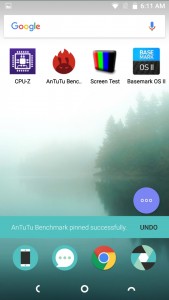
The second part of the Nextbit Cloud is a bit more conventional wherein it backs up your photos while maintaining a resized local version that you can glimpse at. Full sized images can once again be downloaded on the fly. While it works well enough, we’d still recommend that you use the amazing Google Photos app as a secondary backup, if only for the brilliant ‘auto awesome’ feature. Don’t want to back up certain apps? You can pin them to the local storage. For photos, you can decide whether you want to upload them at all. The entire system works seamlessly, something that is rather rare to see from a company that is just starting out.
Performance
From a performance perspective, the Nextbit Robin is perfectly mid-range. The phone is powered by a last gen Snapdragon 808 processor that is still powerful enough for most users. There’s 3GB of RAM onboard which ensures that heavy multitasking is a non issue. The software too has been optimized to the point of being fast and fluid for practically all operations. You might come across the rare stutter on the screen but these too have been smoothened out over updates. Overall, the Nextbit Robin’s performance is as you’d expect from any mid-range handset and the lack of any stand out issues makes it a rather good experience. We’ve included some benchmark scores below in case you want to take a look at synthetic scores.
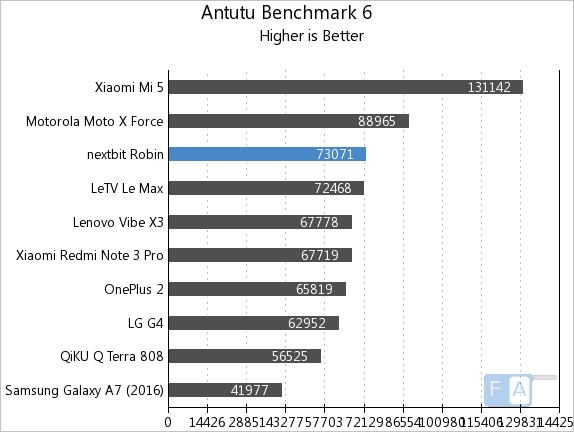
In the AnTuTu 6 benchmark, the Robin scores 73071 points placing it close to its contemporaries like the Moto X Force.
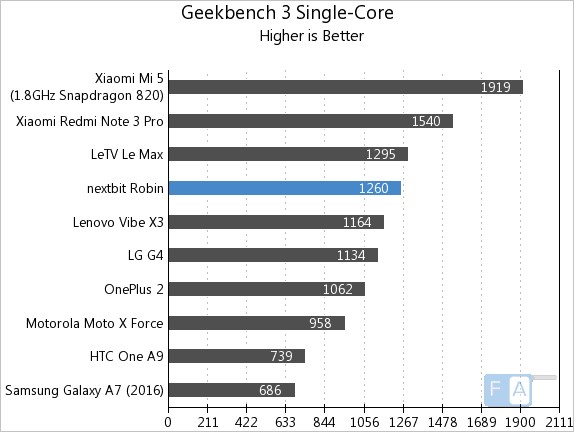
In the single core Geekbench 3 benchmark, the phone scores 1260 points placing it around the middle of the test bench.

In the multi core Geekbench 3 benchmark though, the phone scores 3538 points where it is placed towards the lower end of the test bed. As always, synthetic benchmarks are only an indication of real world performance. In practice, we found the Nextbit Robin’s performance to be completely satisfactory for day-to-day use.
Display
The display on the Nextbit Robin is a 5.2″ 1080p IPS LCD unit. The display is perfectly serviceable but nothing worth writing home about. The brightness levels are sufficiently high and sunlight visibility isn’t a concern.
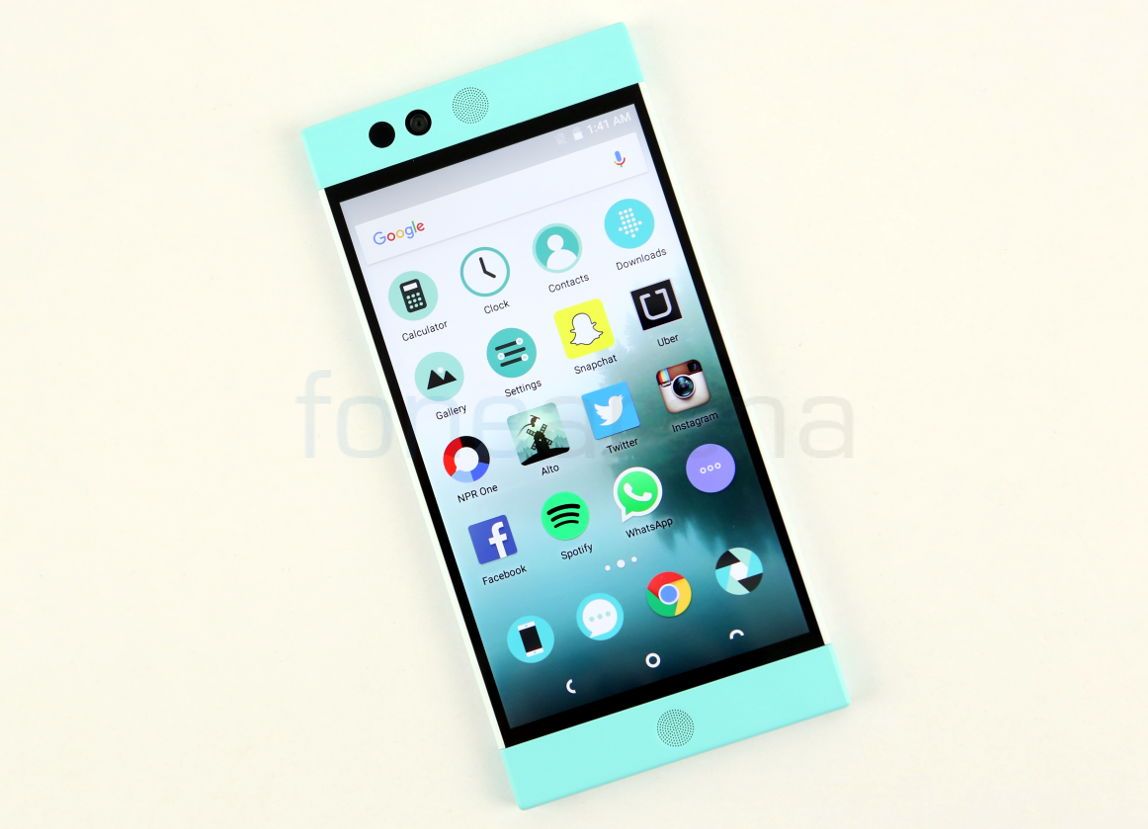
Since the phone employs a LCD display, the contrast levels are already a bit muted compared to AMOLED displays. The Robin’s screen displays very natural looking colors so those who prefer high saturation levels might be slightly put-off. The slightly dull theme further accentuates this. The average user though should be perfectly content with the display on hand.
Camera
The camera on the Nextbit Robin is perfectly serviceable. It might not be able to keep pace with the flagships of this generation but it produces images that are pleasing to look at, high on details and are consistent to boot.
In our testing, we observed that as long as the lighting was good, the Robin captured nicely detailed shots that were low on noise. Dynamic range was also above average.
Low light capture on the other was a hit or miss. Images had a tendency to exhibit high levels of noise. While the camera module itself is pretty decent for its class, it is the capturing experience that is a bit off-key. There’s fairly significant lag between tapping the capture button and the camera actually taking the photograph. Capturing photographs hence becomes a tedious task, more so when the object isn’t stationary.
Connectivity & Battery Life
With 4G LTE, WiFi 802.11a/b/n/ac, Bluetooth 4.0 LE, NFC and a USB Type-C Port onboard, the Nextbit Robin is solid on the connectivity front. There’s 32GB of storage onboard of which around 24GB is available at first boot. Since the premise of the handset is to offer unlimited storage via the cloud, there’s also 100GB of connected storage available. Predictably, the phone lacks a microSD card slot.
With a 2680 mAh battery built into the phone, we didn’t expect exemplary battery life. This proved to be true in our testing where the phone just about made it through a work day. Sure, the phone does have quick charging support but that hardly makes up for the fact that you’ll often be left struggling to find a charging point in the middle of the day.
Conclusion
The Nextbit Robin is a very refreshing take on what makes a smartphone, both in terms of design and the cloud connected capabilities. The cute candy bar like design is unique and stands far above what most of the competitors are doing. In a market where everybody is embracing glass and metal and ever slimmer designs, the Robin takes a more human approach. An approach that most definitely works in its favor.
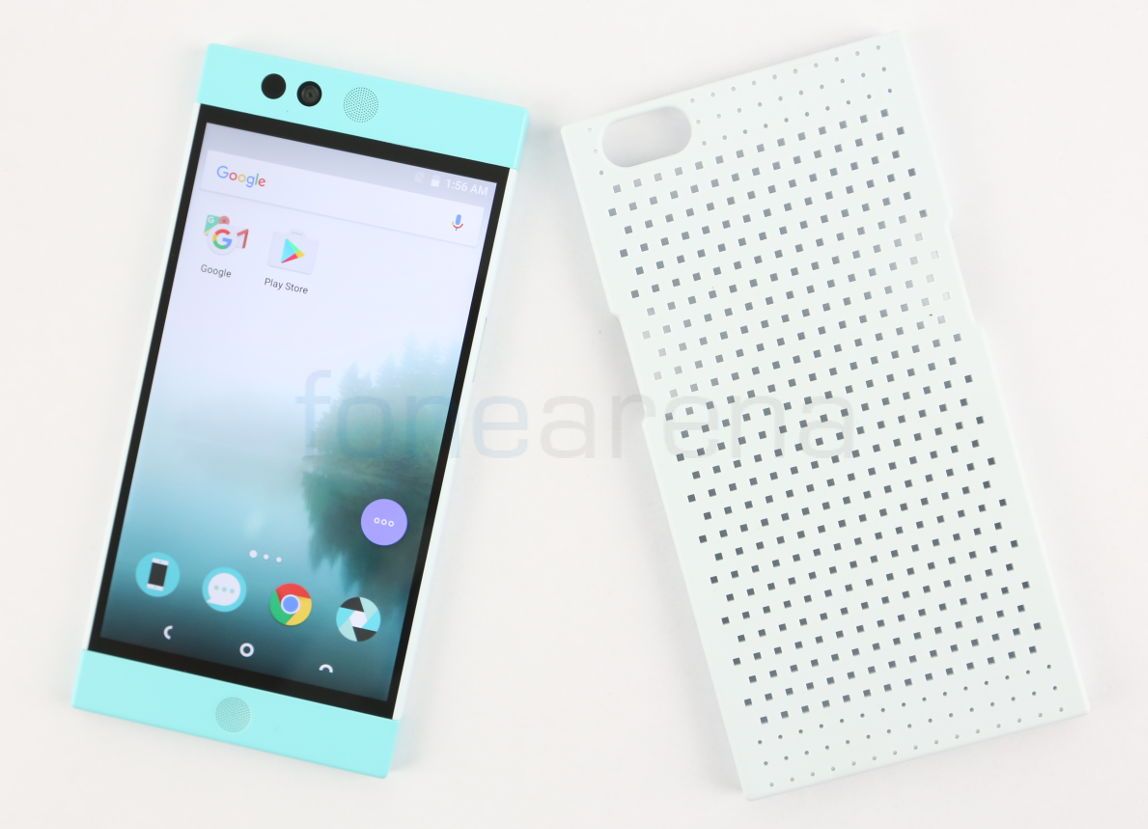
Is the Robin perfect? Certainly not. The camera is above average but could do with a lot more tuning. The battery life too is rather disappointing. That won’t dissuade us from recommending the Robin though. Priced at Rs. 19,999, the Nextbit Robin offers a very unique take on a smartphone and doesn’t skimp on the essentials while doing so. It will be available exclusively from Flipkart starting from May 30th.
Pros
- Design
- Dual Speakers
- Cloud Connected
Cons
- Battery Life
- Camera Performance



